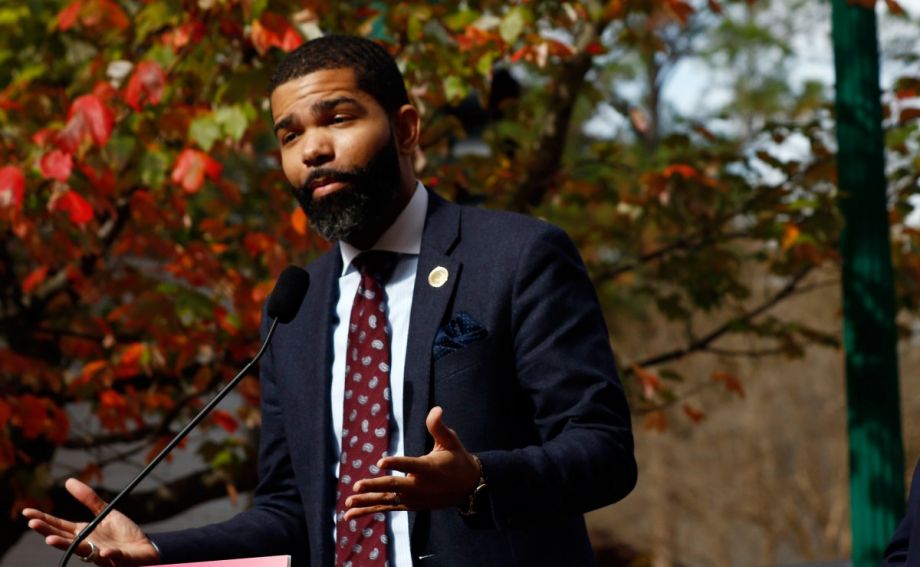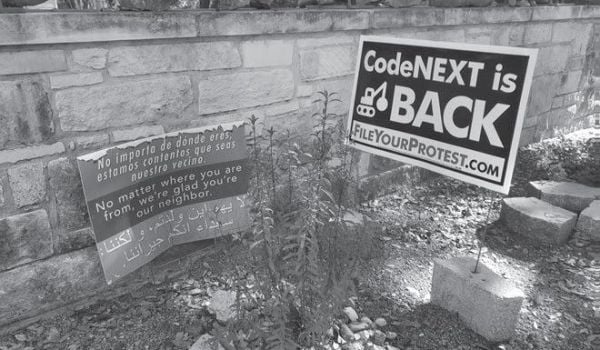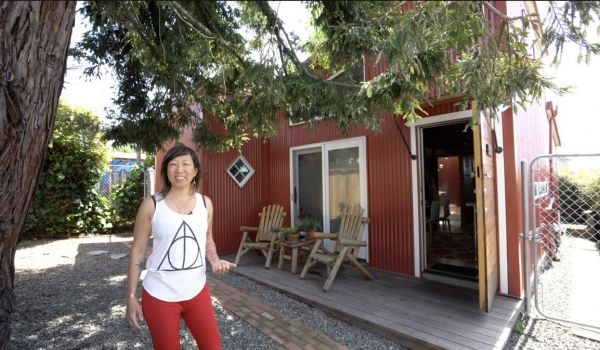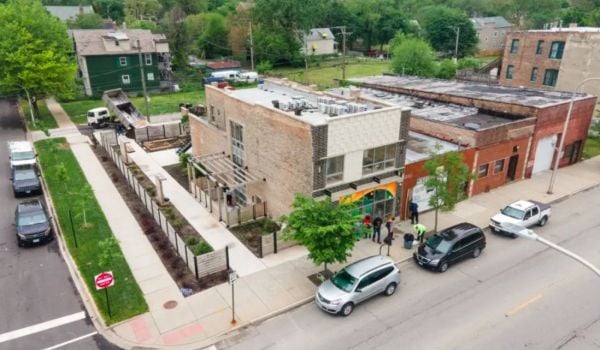The last time the city of Jackson, Mississippi developed a comprehensive plan, Mayor Chokwe Antar Lumumba was graduating high school. (He’s now 38.) Lumumba became mayor in 2017 in an election that was said to represent a new era for Jackson and the South. In his campaigning, he stressed that solutions for the city’s crises — including economic inequality, budget cuts and crumbling infrastructure — shouldn’t come from the upper levels of government or policy advisors — but instead the very people who have long been marginalized by the political status quo.
It was under that belief his administration kicked off a new comprehensive planning process which in many ways has centered around Washington Addition, a predominantly Black neighborhood that faced significant city neglect but is undergoing new development due to its proximity to Jackson State University. More recently, this community engagement translated to the mayor’s response to the water crisis caused by February storms.
“Many of the groups that have participated in some way in our planning processes activated and provided mutual aid during the water crisis,” says Mayor Lumumba. “I would say that relationships became the forefront of the mutual aid process … that is something that Jackson, as a whole, not limited to city government by itself, seems to be extremely skilled at.”

Mayor Lumumba’s focus on Washington Addition predates the larger citywide comprehensive plan and essentially shaped that process to come. In many ways, this neighborhood — one of the first African American communities in Jackson — embodies struggles of predominantly Black communities across the country.
What became a working-class enclave intimately tied to the university was badly impacted by white flight from the city in the 1970s and 80s. “Like much of West Jackson, Washington Addition became, by the 1990s, an almost forgotten area,” according to a history of the neighborhood. By 2000, nearly one-quarter of all housing units were vacant. In 2002, the university formed the Jackson State Center for University Based Development to help spur revitalization efforts.
The Mayor’s office wanted a more active role in the relationship between Washington Addition and Jackson State University, especially as development interest increased. In 2019 the administration kicked off its first neighborhood planning process here. “It was an attempt to use existing staff, who carried multiple duties at the time, and attempting to do the first neighborhood plan in quite a number of years,” explains Jordan Rae Hillman, director of planning and development for the city.
With limited staff and infrastructure, the city’s planning team got creative. The city forged a partnership with the local Jim Hill High School to create the Jim Hill Neighborhood Planning Team. In February of 2019 the team, which included high school students, held a neighborhood survey outside a Family Dollar Store. Responses were used to develop neighborhood statistics on quality of life issues including housing, open space, transit, blight and healthy food access. The city also tracked property conditions, vacant land conditions and existing land use to create a GIS map.
“We actually didn’t come out of this with a written plan to date,” notes Hillman. “We came out of this with internal goals through supporting the neighborhood with our services better.” It also revealed that the planning team needed more capacity to continue the work. “The Washington Addition work really solidified we needed to resource build — we jumped in without the true resources to support it,” Hillman says.
Given years of government funding cuts, resource building looked as basic as replacing outdated computers, utilizing modern mapping and data software and hiring dedicated neighborhood planning staff. “We’ve prioritized it within our latest budget,” notes Mayor Lumumba.
In February, planners kicked off citywide comprehensive planning to get a big-picture look at existing resources and needs across the city. “We really had to engage with one another to identify what we want to build and what we want to see,” as Mayor Lumumba put it. Then the challenges hit: major flooding in early 2020, followed by COVID-19. February’s winter storms caused a five-week water crisis that was years in the making, due to infrastructure neglect and tax cutting by the Republican-led state government alongside a shrinking tax base exacerbated by white flight.
That crisis deepened the urgency to prioritize infrastructure in city planning, according to Mayor Lumumba. “The comprehensive plan is not a replacement for a capital improvement plan,” he notes. “The comprehensive plan will look at the systemic planning decisions and population decline that contributed to our infrastructure challenges over the past fifty years, and the policies developed will be focused on creating the population base and land use pattern that is needed to maximize the use of our existing infrastructure.”
The city navigated other challenges. It couldn’t replicate some of its successful engagement initiatives in Washington Addition, like partnering with local schools or conducting in-person neighborhood surveys, during COVID-19. Instead, the city partnered with the Central Mississippi Planning & Development District and the nonprofit One Voice to begin digital and telephone outreach, as well as some socially-distant gatherings. Mayor Lumumba also focused on the transition from neighborhood planning in Washington Addition to the rest of Jackson during his Just City Mayoral Fellowship with the Mayor’s Institute on City Design.
“What we have to realize is that engagement doesn’t stop with this process — it requires ongoing communication, an ongoing investment in what the community is saying they want and need,” Mayor Lumumba says. “So as we’re engaging the community about blight elimination, for example, we’re dealing with it in a strategic way that doesn’t just set the stage for gentrification.”
Indeed, one thing that will set this comprehensive plan apart from its predecessor is prioritizing how race and racism has deeply shaped the city. “We know we have a very racist history here,” Hillman says. “The level it worked into how our housing looks today is the story we are trying to tell, and then match our recommendations and interventions moving forward with how we reconcile that. We think it’s a really important conversation between the white and Black community in Jackson.”
An internal planning team is currently studying matters like redlining and discriminatory zoning in specific Jackson neighborhoods. Washington Addition, for example, was marketed as a “colored subdivision” when homes went on the market in the early 1900s.
The goal is to finish the comprehensive plan this year, which will identify neighborhood planning districts throughout the city. (While it will provide guidance on priorities to support economic and neighborhood stability and growth, it will not identify specific projects, the mayor says.) The team will then return its focus to Washington Addition to complete a plan that builds off all the city’s prior work.
When Mayor Lumumba thinks on the importance of this comprehensive planning for Jackson, he quotes Scripture: “People without a vision perish,” he says. “I believe that. I believe that without a true plan, we really have no idea where we’re going. And as you’re looking for people to make investments in your community, they need to see the overall mission of the community and where we’re headed.”
This article is a part of “Design Leaders,” a series highlighting mayors’ roles in design and the built environment in their cities. Design Leaders is made possible with the support of The Mayors’ Institute on City Design, a National Endowment for the Arts leadership initiative in partnership with the United States Conference of Mayors.

Emily Nonko is a social justice and solutions-oriented reporter based in Brooklyn, New York. She covers a range of topics for Next City, including arts and culture, housing, movement building and transit.
Follow Emily .(JavaScript must be enabled to view this email address)
















